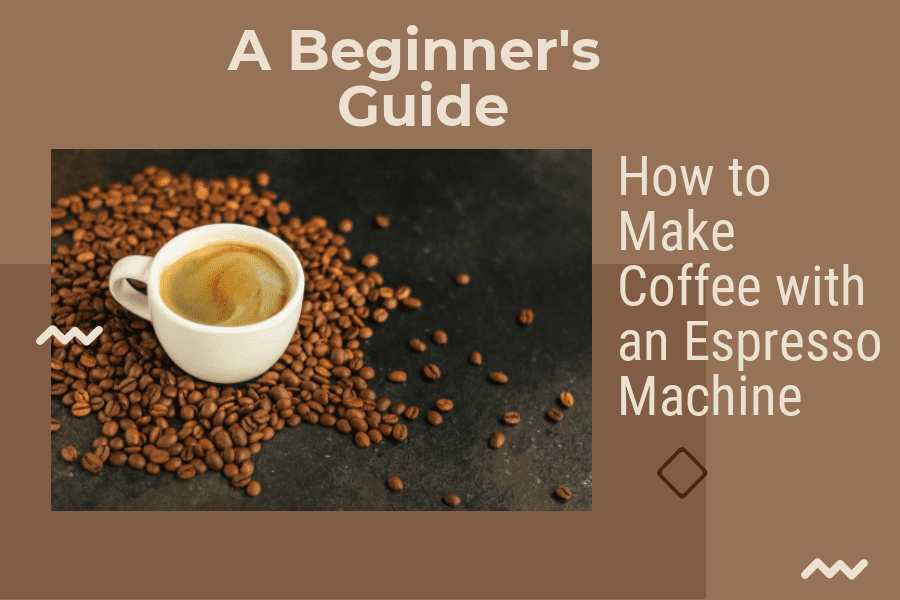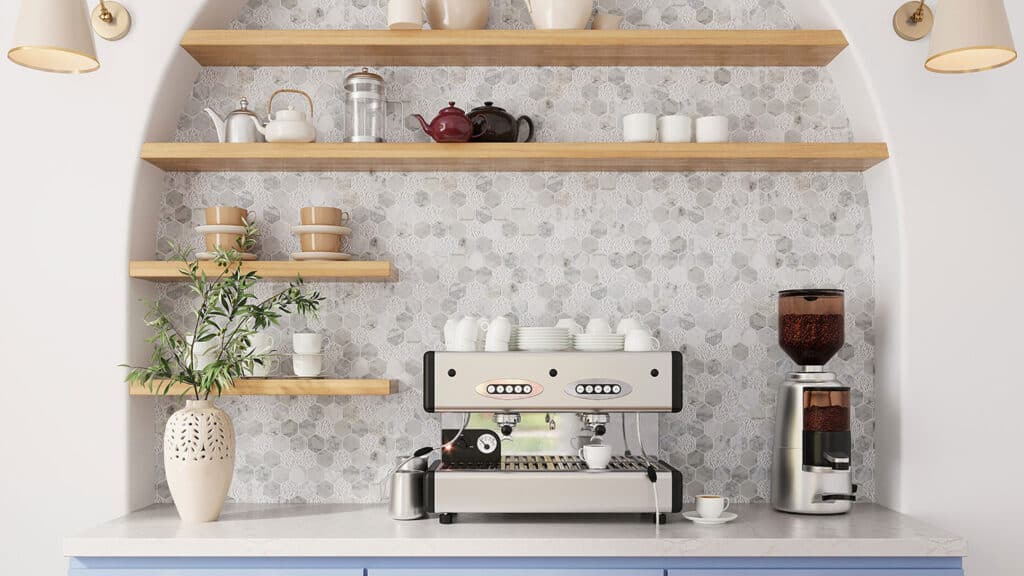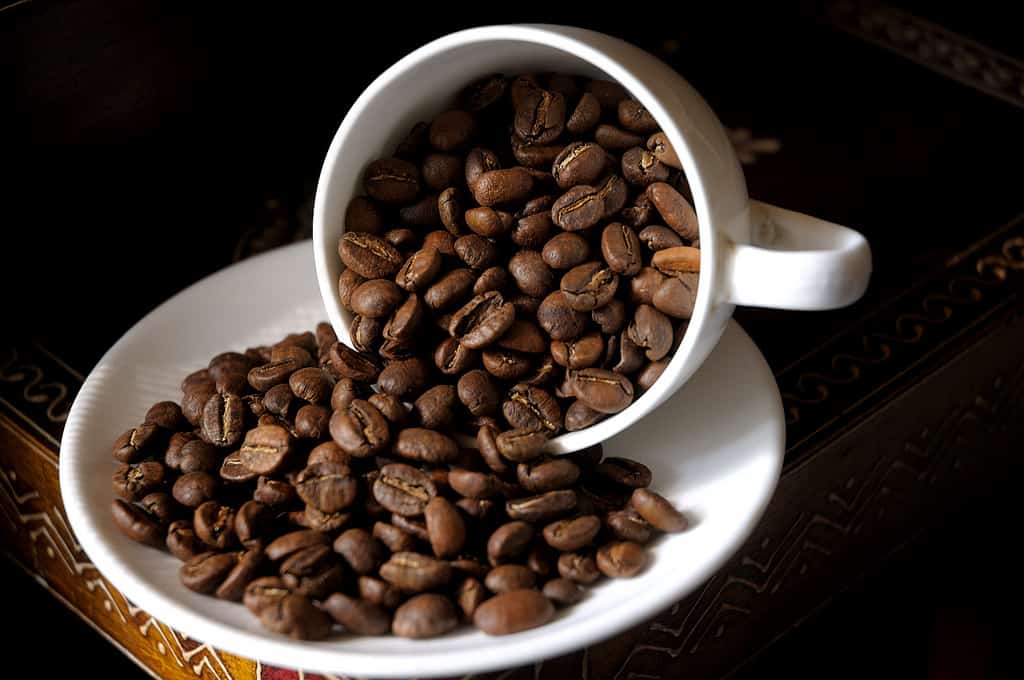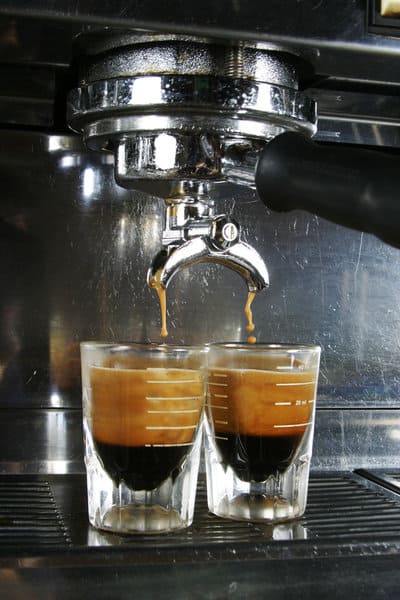How to Make Coffee with an Espresso Machine: A Beginner’s Guide

If you’re a coffee lover, you know that there are many ways to make a delicious cup of coffee. One popular method is using an espresso machine. Espresso machines can be intimidating at first, but with a little practice, you can make a great cup of coffee that rivals your favorite coffee shop. In this article, we will guide you through the process of making coffee with an espresso machine.
Before we dive into the specifics, let’s talk about what an espresso machine is. An espresso machine is a coffee-making device that uses pressurized water to force hot water through finely ground coffee beans. The result is a concentrated shot of coffee with a layer of crema on top. Espresso machines come in different types, including manual, semi-automatic, and automatic. Each type has its own pros and cons, but they all work on the same principle of using pressurized water to extract coffee.
Now that we know what an espresso machine is, let’s get started on making coffee. The first step is to choose your coffee beans and grind them to the right consistency. Espresso requires a fine grind, so make sure your grinder is set to the right setting. Once you have your coffee grounds, it’s time to prepare your machine. Depending on the type of machine you have, this may involve filling the water tank, turning on the machine, and letting it warm up. Once your machine is ready, it’s time to start brewing.

Choosing the Right Espresso Machine
When it comes to making coffee with an espresso machine, choosing the right one is crucial. There are many factors to consider, including the type of machine and the features it offers. In this section, we’ll take a look at some of the most important considerations when choosing an espresso machine.
Espresso Machine Types
There are three main types of espresso machines: manual, semi-automatic, and fully automatic. Manual machines require the most skill and knowledge to use, as they involve manually controlling the pressure and water flow. Semi-automatic machines offer some level of automation, but still require some skill to use. Fully automatic machines are the easiest to use, as they handle everything from grinding the beans to brewing the espresso.
Features to Consider
When choosing an espresso machine, there are several features to consider:
- Pressure: The pressure at which the machine brews the espresso is important, as it affects the taste and quality of the coffee. Look for a machine that can produce at least 9 bars of pressure.
- Water: The quality of the water used in the machine can also affect the taste of the coffee. Look for a machine with a built-in water filter or use filtered water.
- Heat: The temperature of the water used to brew the espresso is important, as it affects the flavor and crema. Look for a machine that can maintain a consistent temperature.
- Portafilter: The portafilter is the part of the machine that holds the coffee grounds. Look for a machine with a high-quality portafilter that is easy to clean.
- Group Head: The group head is the part of the machine that the portafilter attaches to. Look for a machine with a high-quality group head that can maintain a consistent temperature.
By considering these factors, you can choose an espresso machine that will meet your needs and allow you to make delicious coffee at home.
Selecting the Best Coffee Beans
When it comes to making coffee with an espresso machine, choosing the right coffee beans is crucial. In this section, we’ll cover the essentials of selecting the best coffee beans for your espresso machine. We’ll discuss roast level, coffee bean varieties, and grinding your coffee beans.

Roast Level
The roast level of your coffee beans will have a significant impact on the taste of your espresso. Generally, darker roasts are best for espresso machines. They produce a more dominant flavor that cuts through the creaminess of milk-based drinks. However, be sure not to overdo it with the roast level. Too dark of a roast can produce a burnt taste that will ruin your espresso.
Coffee Bean Varieties
There are two primary coffee bean varieties: Arabica and Robusta. Arabica beans are the most commonly used for espresso due to their smooth, balanced flavor. On the other hand, Robusta beans are known for their high caffeine content and slightly bitter taste. While Arabica beans are the go-to for espresso, a small amount of Robusta beans in your blend can give your shot more crema.
Grinding Your Coffee Beans
Once you’ve selected your coffee beans, it’s time to grind them. The grind size is essential for producing a quality espresso shot. We recommend using a burr grinder, as it produces a consistent grind size. For espresso machines, a very fine powder-like grind size is best. This will ensure that the water is extracted evenly and that you get a full-bodied shot.
By following these tips for selecting the best coffee beans, you’ll be well on your way to making delicious espresso shots with your espresso machine.
Brewing the Espresso Shot
Now that we have our espresso machine set up and our coffee beans ground, it’s time to start brewing our espresso shot. Brewing the perfect shot takes practice, but we’ll guide you through the process step by step.

Tamping Your Coffee Grounds
Before we start brewing, we need to tamp our coffee grounds. Tamping is the process of compressing the coffee grounds to create an even surface for the water to pass through. This is an important step because if the grounds are not tamped evenly, the water will not flow through the coffee evenly, resulting in an under-extracted or over-extracted shot.
To tamp your coffee grounds, place the portafilter on a flat surface and add your coffee grounds. Use a tamper to press down on the coffee grounds with about 30 pounds of pressure. The coffee grounds should be evenly distributed and level with the top of the portafilter.
Dosing Your Coffee Grounds
The amount of coffee you use in your espresso shot is called the dose. For a double shot, we recommend using 14-18 grams of coffee grounds. If you’re using a pressurized portafilter, you may need to adjust the dose to get the desired yield.
Once you’ve added your coffee grounds to the portafilter, use your finger or a leveler to distribute the coffee evenly. This will ensure that the water flows evenly through the coffee grounds and extracts the flavors evenly.
Pulling the Espresso Shot
Now it’s time to pull the espresso shot. Start by turning on your espresso machine and letting it heat up for about 15-30 minutes. Once the machine is heated up, place the portafilter into the group head and start the extraction.
As the espresso shot is being extracted, keep an eye on the crema. The crema is the layer of foam that forms on top of the espresso shot. A good crema should be thick, creamy, and have a reddish-brown color. If the crema is thin and light in color, it may be a sign of under-extraction. If the crema is dark and bitter, it may be a sign of over-extraction.
Once you’ve pulled your espresso shot, taste it and adjust the grind size and dose as needed to get the desired yield and flavor. With practice and experimentation, you’ll be able to pull the perfect shot every time.
Making Espresso-Based Drinks
Making espresso-based drinks is a great way to enjoy coffee with a rich, full-bodied flavor. With an espresso machine, you can make a variety of drinks that are sure to please any coffee lover. In this section, we will go over how to make some of the most popular espresso-based drinks, including lattes, cappuccinos, macchiatos, and Americanos.
Latte
A latte is a popular espresso-based drink that is made with steamed milk and a shot of espresso. To make a latte, start by pulling a shot of espresso and then steaming milk. Once the milk is steamed, pour it into a cup and then add the shot of espresso. You can also add flavorings like vanilla or caramel syrup to your latte, if desired.
Cappuccino
A cappuccino is another popular espresso-based drink that is made with equal parts espresso, steamed milk, and milk foam. To make a cappuccino, start by pulling a shot of espresso and then steaming milk. Once the milk is steamed, pour it into a cup and then add the shot of espresso. Finally, top the drink with milk foam. Some people like to sprinkle cinnamon or cocoa powder on top of their cappuccino for added flavor.
Macchiato
A macchiato is a simple espresso-based drink that is made by adding a small amount of steamed milk to a shot of espresso. To make a macchiato, start by pulling a shot of espresso and then steaming a small amount of milk. Once the milk is steamed, pour it into the espresso shot. The milk should just be enough to leave a mark or “stain” on the espresso, hence the name “macchiato,” which means “stained” in Italian.
Americano
An Americano is a popular espresso-based drink that is made by adding hot water to a shot of espresso. To make an Americano, start by pulling a shot of espresso and then adding hot water to the espresso shot. The amount of water you add will depend on how strong you want your Americano to be. Some people like to add a splash of milk or cream to their Americano for added flavor.
Whether you’re in the mood for a latte, cappuccino, macchiato, or Americano, an espresso machine makes it easy to enjoy your favorite espresso-based drinks. With a little practice, you can become a master at making these delicious drinks in no time!
Alternative Brewing Methods
If you don’t have an espresso machine or just want to try something different, there are several alternative brewing methods available. Here are some of our favorites:
French Press
The French press is a classic and simple way to make coffee. It involves steeping coffee grounds in hot water and then pressing them down with a plunger. Here’s how to make coffee with a French press:
- Boil water and let it cool for a minute or two.
- Add coffee grounds to the French press. Use a ratio of 1:15, meaning 1 gram of coffee for every 15 grams of water.
- Pour hot water over the coffee grounds and stir.
- Let the coffee steep for 4-5 minutes.
- Press the plunger down slowly to separate the grounds from the coffee.
Moka Pot
A Moka pot is a stove-top coffee maker that produces a strong, concentrated coffee. Here’s how to use a Moka pot:
- Fill the bottom chamber with water up to the safety valve.
- Add coffee grounds to the filter basket and level them off.
- Screw the top and bottom chambers together.
- Place the Moka pot on the stove over medium heat.
- When the coffee starts to come out of the spout, remove the Moka pot from the heat and serve.
Drip Coffee Maker
A drip coffee maker is a common household appliance that brews coffee by slowly dripping hot water through coffee grounds. Here’s how to use a drip coffee maker:
- Add water to the reservoir of the coffee maker.
- Place a paper filter in the filter basket and add coffee grounds.
- Turn on the coffee maker and wait for the coffee to brew.
- Once the coffee is brewed, serve and enjoy.
Keurig
A Keurig is a single-serve coffee maker that uses pre-packaged coffee pods. Here’s how to use a Keurig:
- Fill the water reservoir with water.
- Insert a coffee pod into the Keurig machine.
- Place your cup under the spout.
- Press the button to start brewing.
- Once the coffee is brewed, remove the pod and dispose of it.
Tips and Tricks for Great Espresso
Taste and Flavors
When making espresso, taste and flavors are crucial. To achieve the perfect taste, we recommend using freshly roasted coffee beans. The brewing process of espresso is quick, so it is essential to use freshly ground coffee beans. This will ensure that the coffee retains its natural flavors and aromas.
Espresso has a thick, creamy texture that is unique to this brewing method. This texture comes from the emulsification of oils and solids in the coffee. To achieve this texture, we recommend using a high-quality espresso machine that can produce the necessary pressure and temperature.
Professional Techniques
If you want to make espresso like a professional, there are a few techniques that you can use. One technique is to rinse the portafilter and group head before brewing. This will ensure that the machine is clean and free from any leftover coffee grounds. Another technique is to use a distribution tool to ensure that the coffee is evenly distributed in the portafilter. Finally, tamping the coffee with the right amount of pressure is crucial to achieving the perfect shot.
Another technique that professionals use is to brew the espresso immediately after inserting the portafilter. This ensures that the coffee does not lose its temperature, which can affect the taste and texture of the espresso.
Cleaning and Maintenance
Regular cleaning and maintenance of your espresso machine are essential to ensuring that it produces high-quality espresso. We recommend cleaning the group head and portafilter after every use to prevent the buildup of coffee oils and residue. This can affect the taste and quality of the espresso.
It is also essential to descale your machine regularly to remove any mineral buildup. This can affect the performance of the machine and the taste of the espresso. Finally, we recommend replacing the machine’s parts, such as the gaskets and screens, periodically to ensure that it is working correctly.
As coffee lovers, we understand the importance of a good cup of espresso. By following these tips and tricks, you can make the perfect shot of espresso at home. Not only will it taste delicious, but it also has health benefits such as antioxidants and caffeine that can help boost your energy levels.
Conclusion
Now that we have learned how to make coffee with an espresso machine, we can enjoy a delicious cup of coffee anytime we want. Remember to start with fresh, high-quality beans and grind them just before brewing for the best flavor.
When using an espresso machine, it’s important to pay attention to the grind size, dose, and tamp pressure to ensure a consistent shot every time. Timing your shots and adjusting the grind as needed can help you achieve the perfect extraction.
Experiment with different brewing methods, such as using a bottomless portafilter or a different brewing temperature, to find the method that works best for you.
Finally, don’t forget to clean your espresso machine regularly to keep it in top condition and prevent any buildup of oils or residue that could affect the flavor of your coffee. With a little practice and patience, you can become a master of making coffee with an espresso machine and enjoy a delicious cup of coffee anytime you want.
To Know More..
Unlock the secret to a perfect cup of coffee with Mocha Magic! Our expertly crafted guide, “Tips for Crafting the Perfect Cup with Your Espresso Machine,” will teach you the art of coffee-making like a pro. Whether you’re a coffee connoisseur or a novice, our step-by-step instructions will help you create rich, flavorful espresso drinks in the comfort of your own home.
Say goodbye to stale and bitter coffee with our step-by-step guide to backflushing your espresso machine. Our easy-to-follow instructions will walk you through the process, ensuring that your machine is clean and ready to brew the perfect shot every time.
RECOMMENDED READS
Top Rated Espresso Machines: Your Guide to the Best Options
The High Cost of Coffee: Why Espresso Machines Are So Expensive
Tips for Making a Mocha with an Espresso Machine for the Perfect Cup






2 Comments